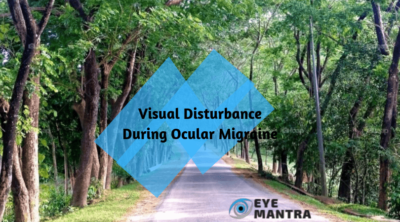
Contents
People have a misconception that “migraine” and “headache” can be used interchangeably. But there is a thin line between the two. Headaches are a moderate pain caused may be from tension and they just tend to distract. Usually, they are not something hazardous. However, in some of the cases, they might be so.
While migraines, on the other hand, have a consistent effect on the patient. The pain caused by it can range from moderate to severe. Some of the symptoms may even include nausea or vomiting, and light and sound sensitivity.
If you have an Ocular Migraine, you may experience vision loss or blindness in one eye for a short time. Less than an hour, most of the time. It’s a rare disease. It can occur along with or after a migraine headache. Sometimes, Ocular migraines can also be painless.
The cause for this condition, as its name would suggest, is a migraine. Some research suggests that in a few cases, the symptoms are due to other problems. Ocular migraines can also be caused by reduced blood flow or spasms of blood vessels in the retina or behind the eye.
Regular migraine attacks can also cause some other vision problems.
Unfortunately, the term “Ocular Migraine” is often also used to describe a much more common (though harmless) condition — called the Visual Migraine or Migraine Aura. It is characterized by temporary visual disturbances that generally disappear within 30 minutes. Aura can involve flashing lights and blind spots. But its symptoms typically affect both eyes.
The main difference between Ocular and Visual Migraines is that the former vision problem occurs just in one eye. While if the problem occurs in both eyes, then it’s Visual Migraine. Also, the symptoms of both can vary.
Generally, the symptoms of Ocular migraine are a small blind spot that affects our central vision in one eye. This blind spot becomes larger, making it impossible for you to read with the affected eye. In a few cases, your whole visual field of that eye may be affected. it may happen for an hour also.
The symptoms of Visual Migraine can vary. Some of them are:
The Visual Migraine symptoms usually put trouble in both eyes and would last for 30 minutes or less. A migraine headache may or may not occur shortly after the symptoms of a Visual Migraine goes back.
In case you are experiencing a blind spot or some other visual disturbance and you’re not sure whether it is Ocular or a Visual Migraine, then cover one eye at a time. If the disturbance is happening in just one eye, it is more likely due to an ocular migraine. If it is affecting both eyes, it is probably a visual migraine.
But you shouldn’t leave them untreated. If you notice any abrupt sort of blind spot in your field of vision, call or consult the Best Eye Doctor immediately to ascertain if it’s non-dangerous or possibly a sign of something far more serious, such as a retinal detachment.
Ocular Migraines occur due to migraines, so they have the same causes as migraine headaches.
But why this occurs and what brings on the inevitable resolution of Ocular and Visual Migraines remains a mystery?
Regular migraine “triggers” that can cause someone to have a migraine attack (including Ocular and Visual Migraines) include specific foods, such as aged cheeses, red wine, caffeinated drinks, smoked meats, and chocolate.
Food additives, such as MSG – Monosodium Glutamate, and artificial sweeteners also can trigger migraines in some people.
Other potential migraine triggers include glaring or flickering lights, cigarette smoke, perfumes, and other strong odors, lack of sleep, and emotional stress.
As previously mentioned, visual disturbances caused by Ocular and Visual Migraines generally disappear within an hour or less without the requirement of any treatment.
If you are performing tasks that require a clear vision, when this Ocular or Visual Migraine occurs, you must stop what you are doing and refrain until the vision returns to normal.
In case you’re driving, park on the side of the road and wait till the vision disturbances get completely over.
If you experience any disturbances that are accompanied by a migraine headache, consult your family physician or a neurologist for evaluation of your migraine occurrences.
The doctor would advise you about the latest medicines for treating migraines, including medicines designed to prevent future attacks.
You are also advised to keep a diary journal of your diet and activities just before your Ocular Migraine or Migraine Aura episodes occur. It will help you identify possible triggers that can be avoided in the future.
If your Ocular Migraines or Migraine Auras (Visual Migraines) appear to be related to stress, you would be able to reduce the frequency of your migraine attacks without medicine simply by:
If you are facing eye pain or some other disturbance of the eyes, please visit an eye specialist Now. To book an appointment with expert ophthalmologists with many years of experience, call at +91- 9711115191
To know more, please visit Eyemantra. Or you can email us on eyemantra1@gmail.com. We specialize in Cataract Surgery, Specs Removal, Retina Surgery, and many more.
Related Articles:
Eye Infection: Common Causes, Symptoms and Treatment in Delhi
Eye Drops: Best Tips to Use & Treat Dry eyes, Cataract, Redness